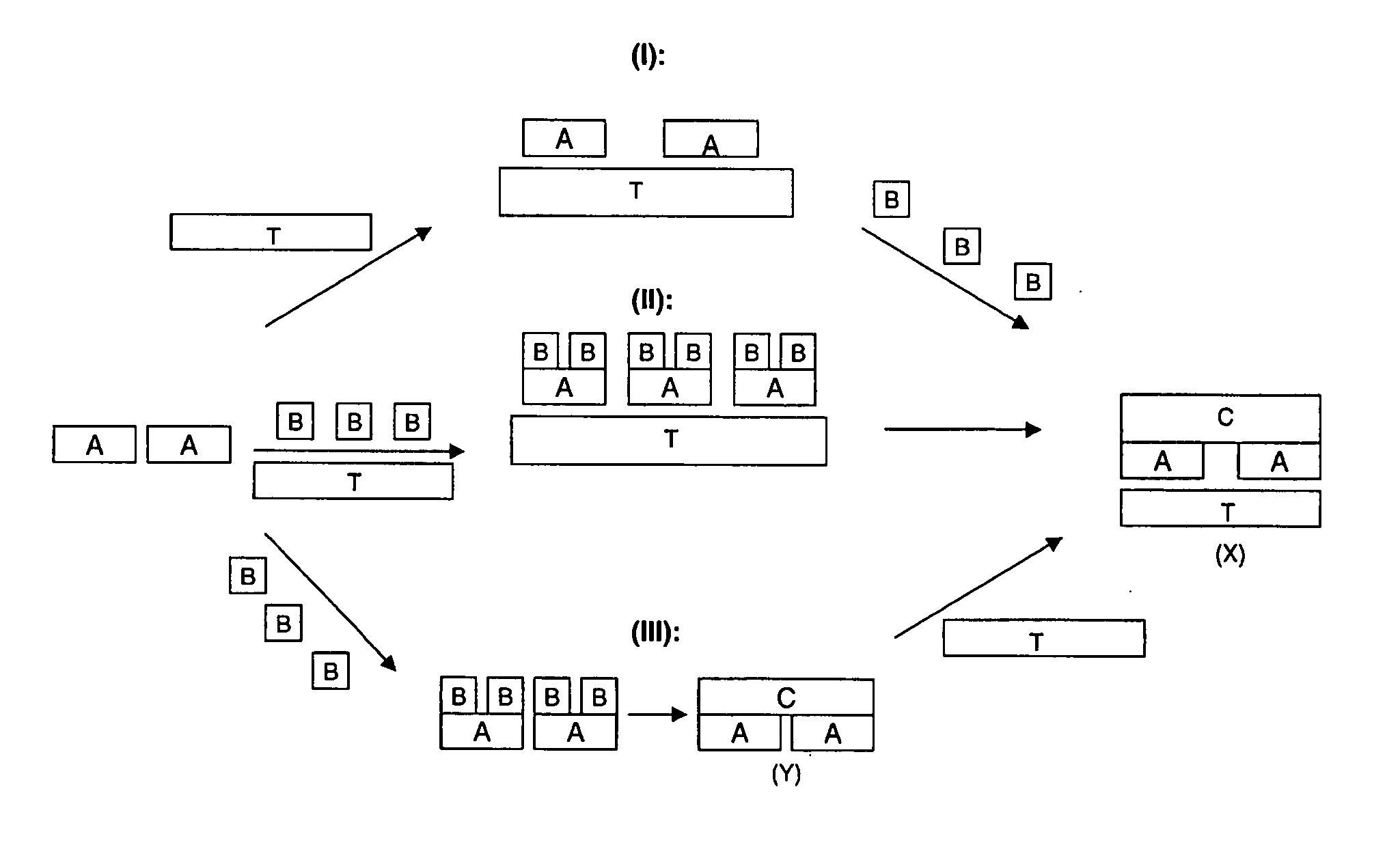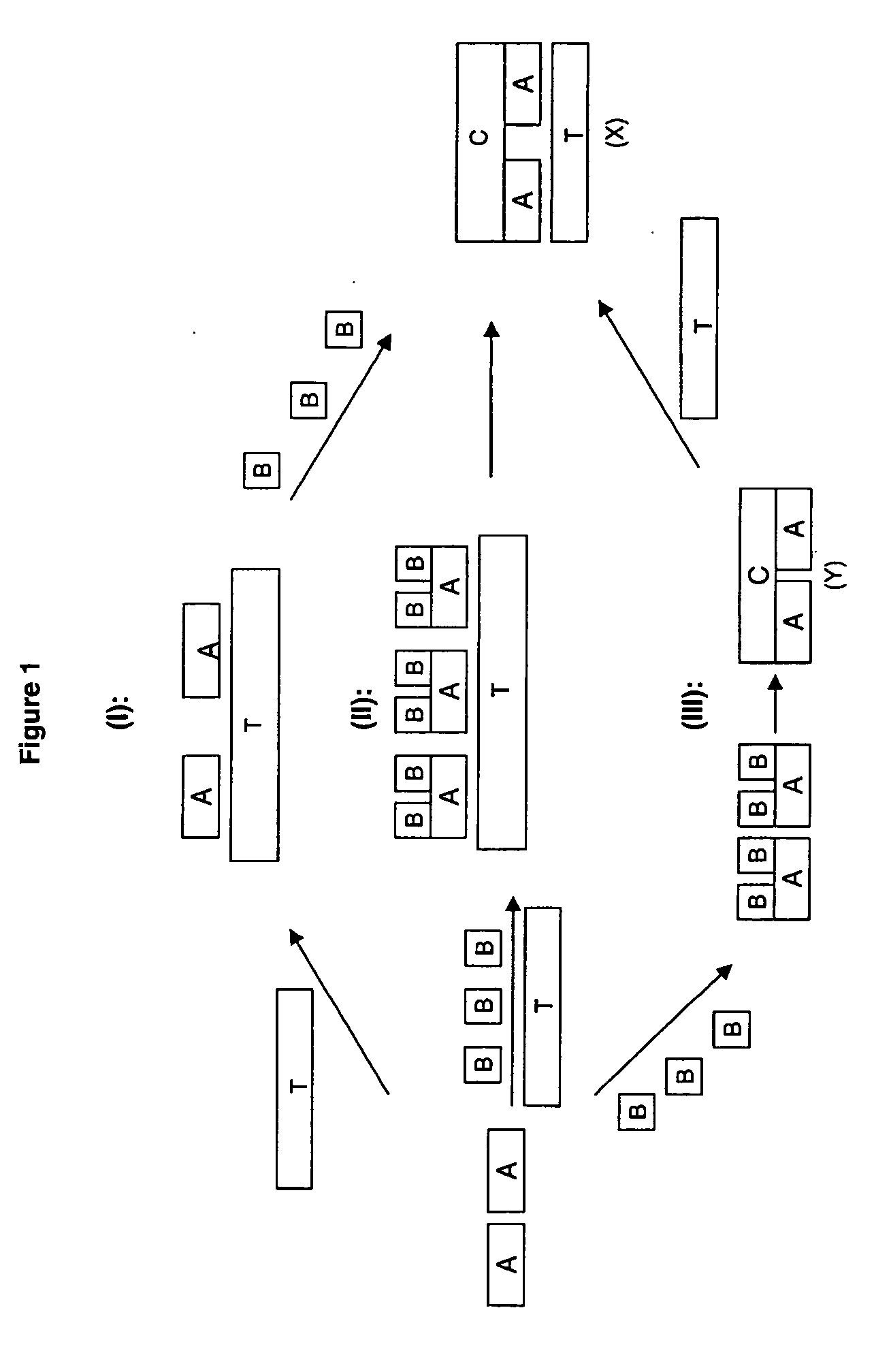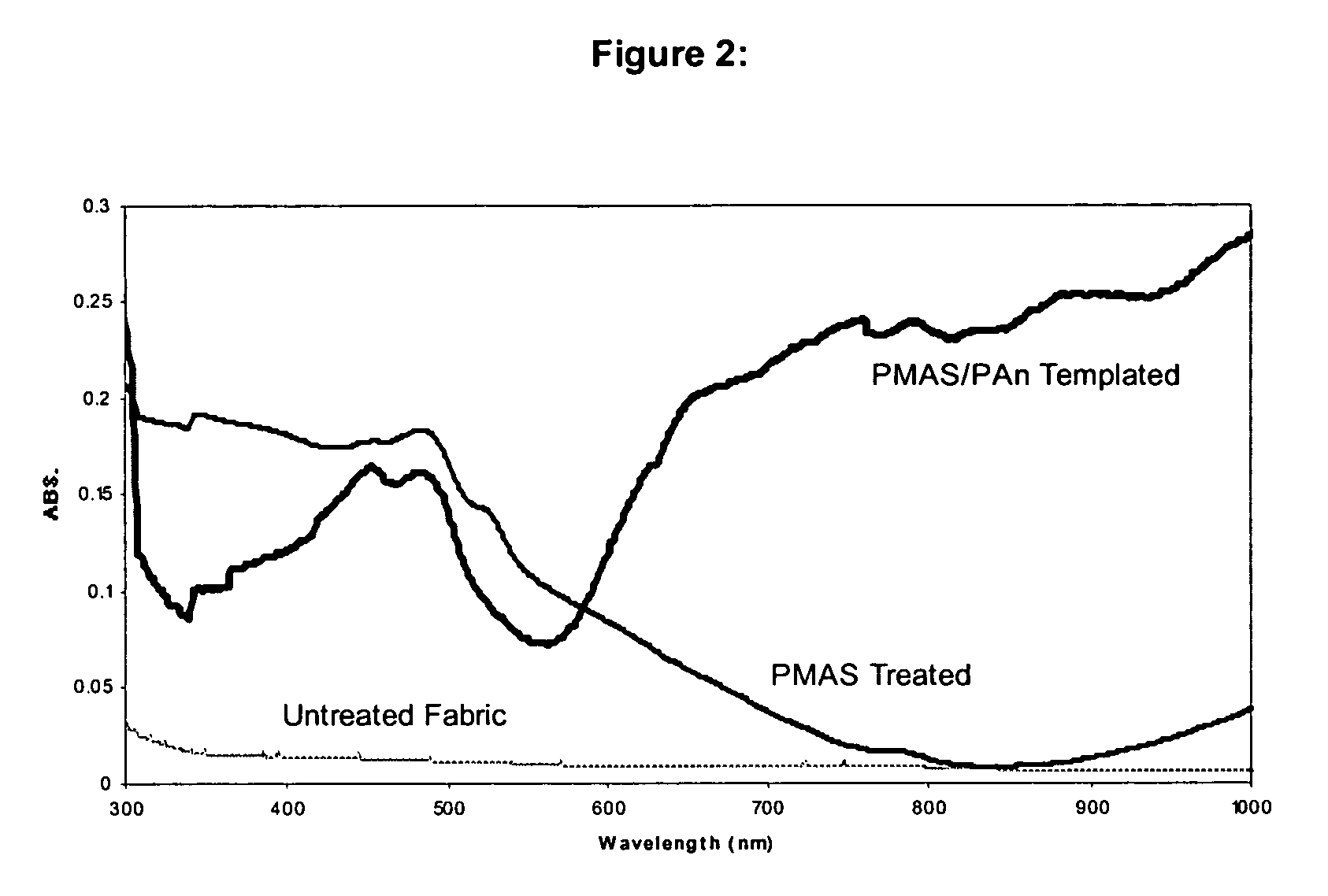Electroconductive textiles
a technology textiles, applied in the field of electrically conductive textiles, can solve the problems of no commercially available conducting polymer coated textiles that meet all of these requirements, no apparent bonding between non-conductive textiles, and usually impossibl
- Summary
- Abstract
- Description
- Claims
- Application Information
AI Technical Summary
Benefits of technology
Problems solved by technology
Method used
Image
Examples
examples
[0080] A number of preferred embodiments are described by reference to the following non-limiting examples.
[0081] Most of the examples provided below utilise poly 2-methoxyaniline-5-sulfonic acid (PMAS) as the macromolecular template. This macromolecular template is itself a conductive polymer, and therefore some electrical resistivities are reported for textiles to which the macromolecular template has been applied. However, to avoid misunderstanding, it is noted that not all conductive polymers are capable of functioning as a macromolecular template which both provide the templating function for the conductive polymer, and bond to a non-conductive textile. Nevertheless, as these precursors in the preparation of the electroconductive textiles of the present invention do have conductive properties, their levels of electrical resistivity have been reported on occasion in the following examples.
[0082] Furthermore, in the examples, the % exhaustion (for example, of molecular template...
PUM
| Property | Measurement | Unit |
|---|---|---|
| temperature | aaaaa | aaaaa |
| temperature | aaaaa | aaaaa |
| contact temperature | aaaaa | aaaaa |
Abstract
Description
Claims
Application Information
 Login to View More
Login to View More - R&D
- Intellectual Property
- Life Sciences
- Materials
- Tech Scout
- Unparalleled Data Quality
- Higher Quality Content
- 60% Fewer Hallucinations
Browse by: Latest US Patents, China's latest patents, Technical Efficacy Thesaurus, Application Domain, Technology Topic, Popular Technical Reports.
© 2025 PatSnap. All rights reserved.Legal|Privacy policy|Modern Slavery Act Transparency Statement|Sitemap|About US| Contact US: help@patsnap.com



